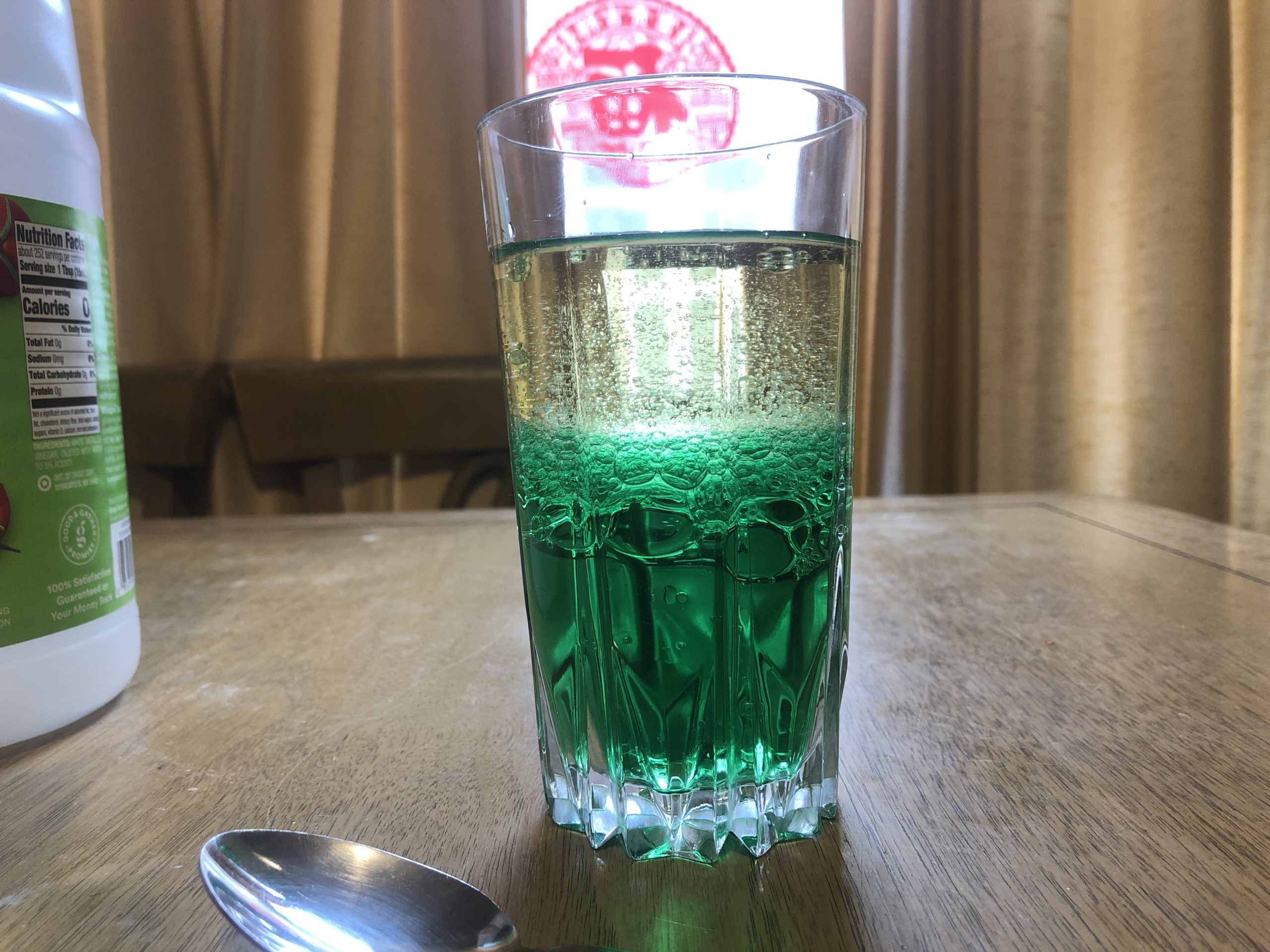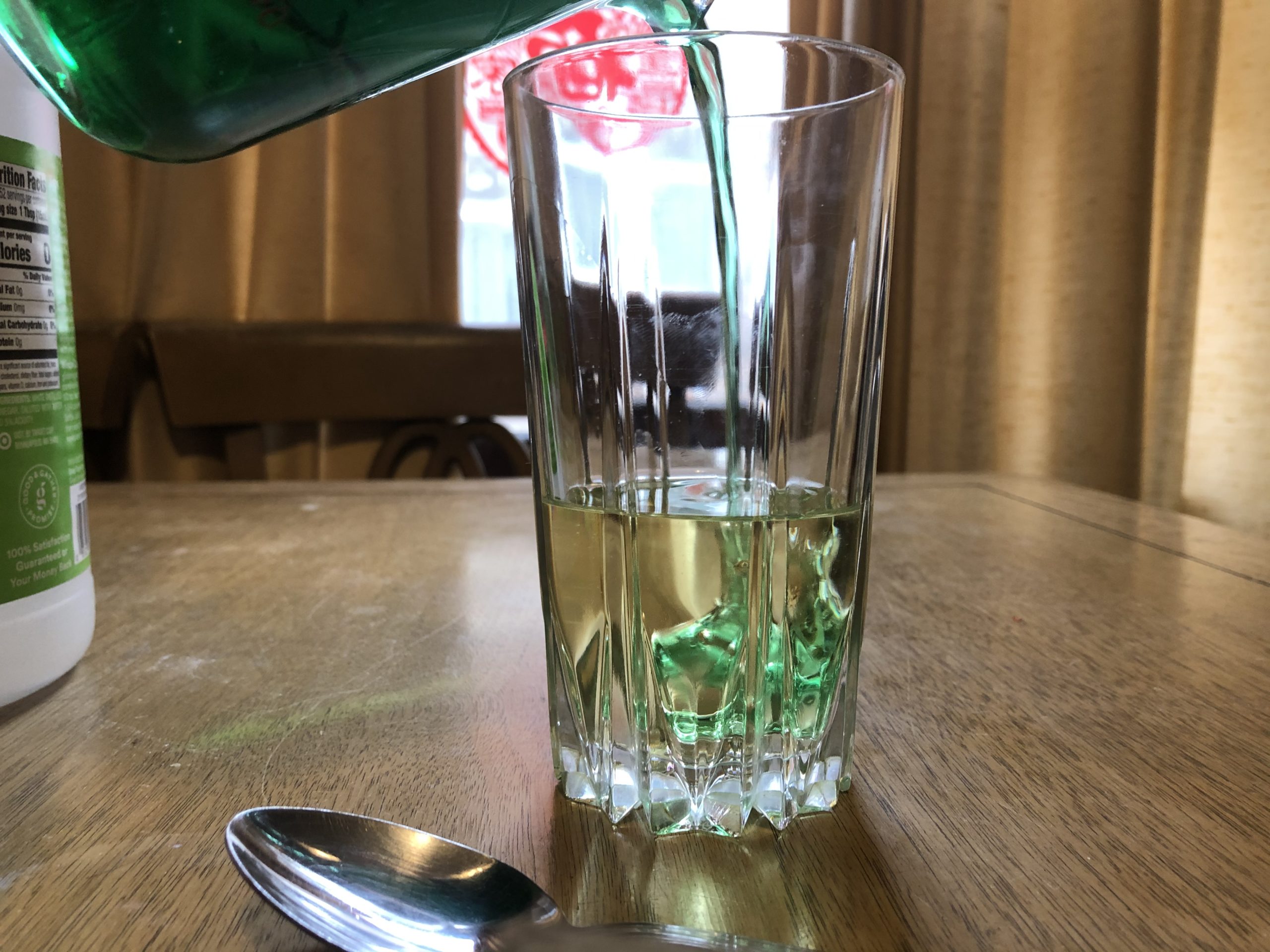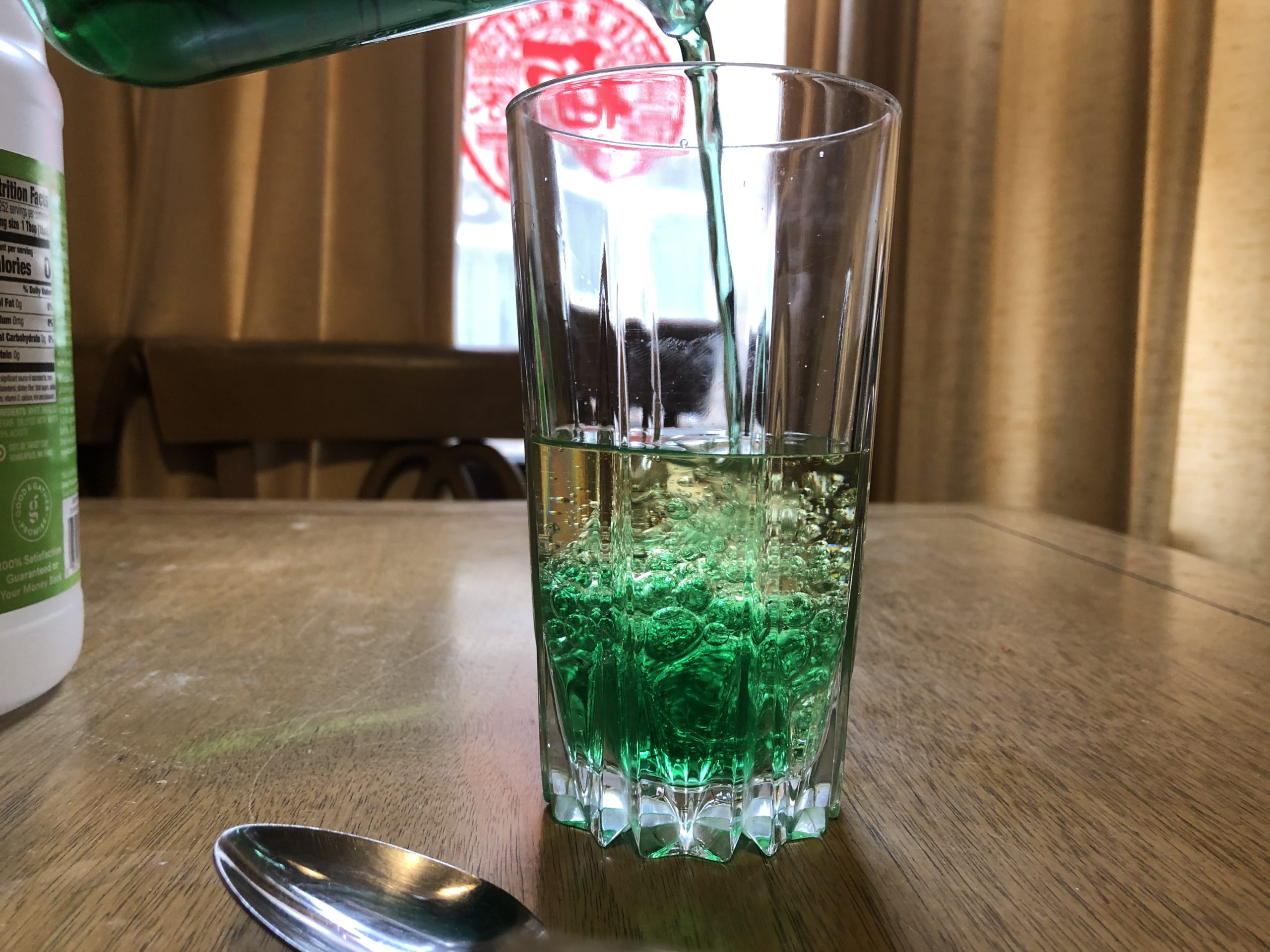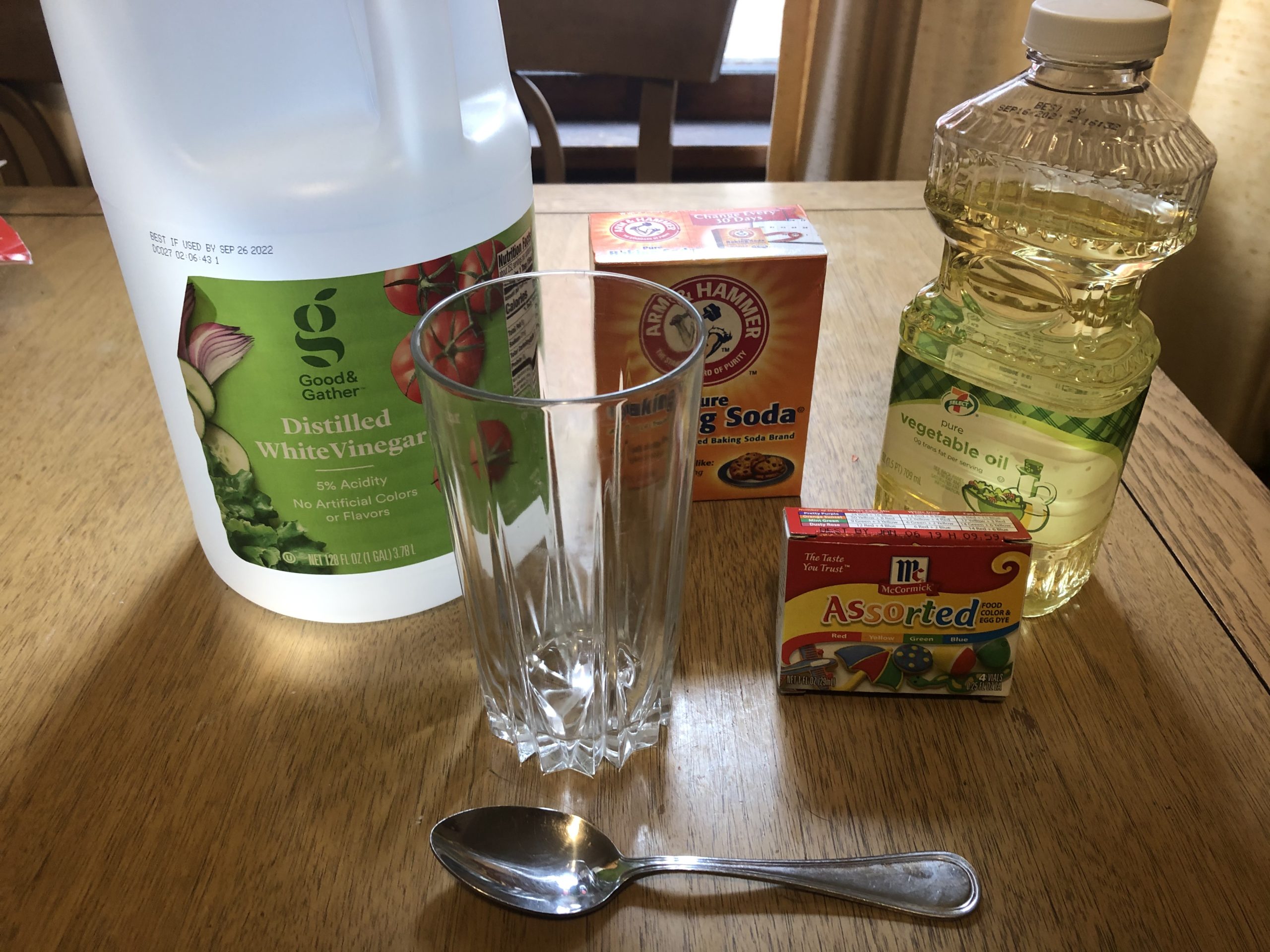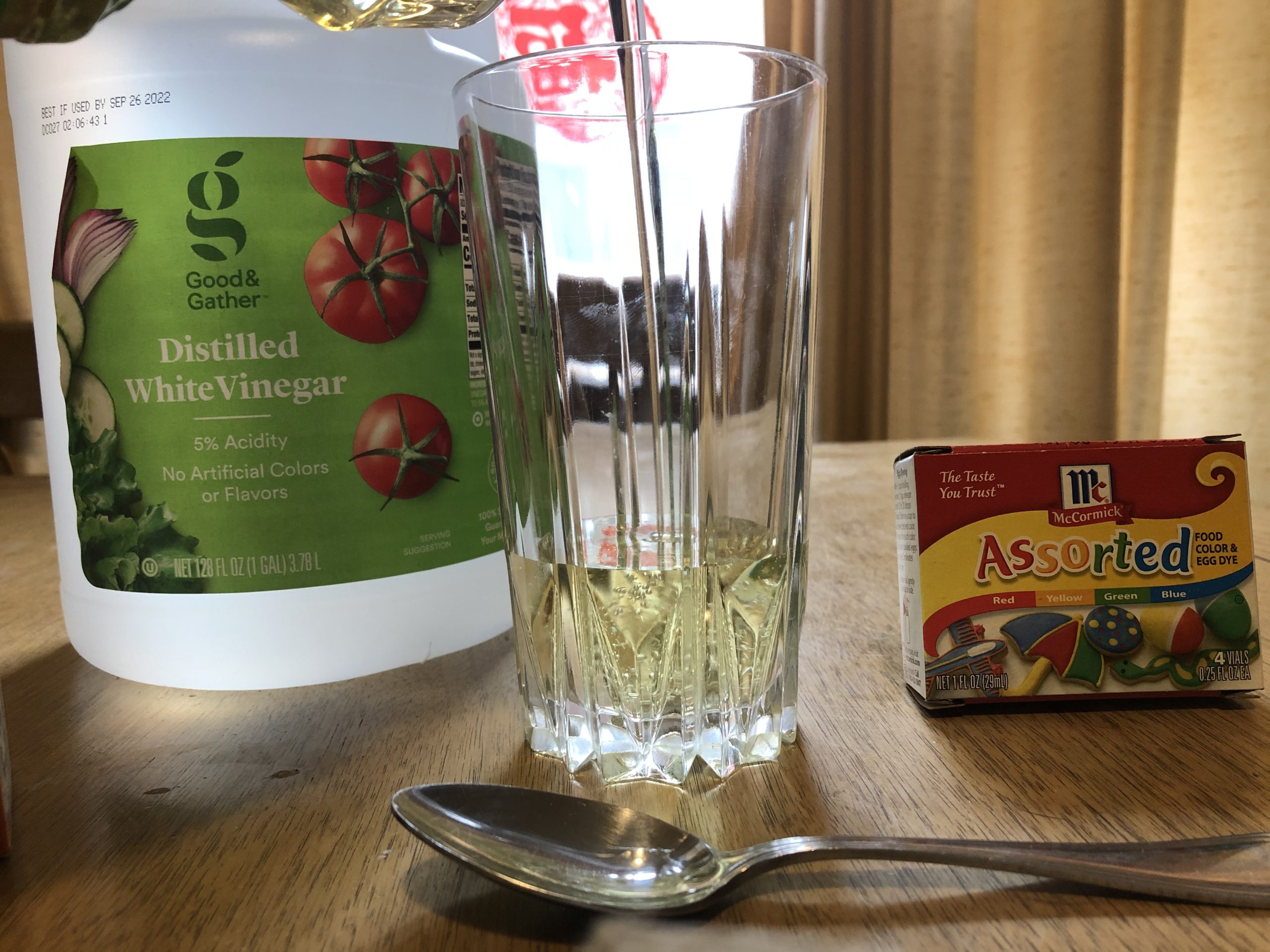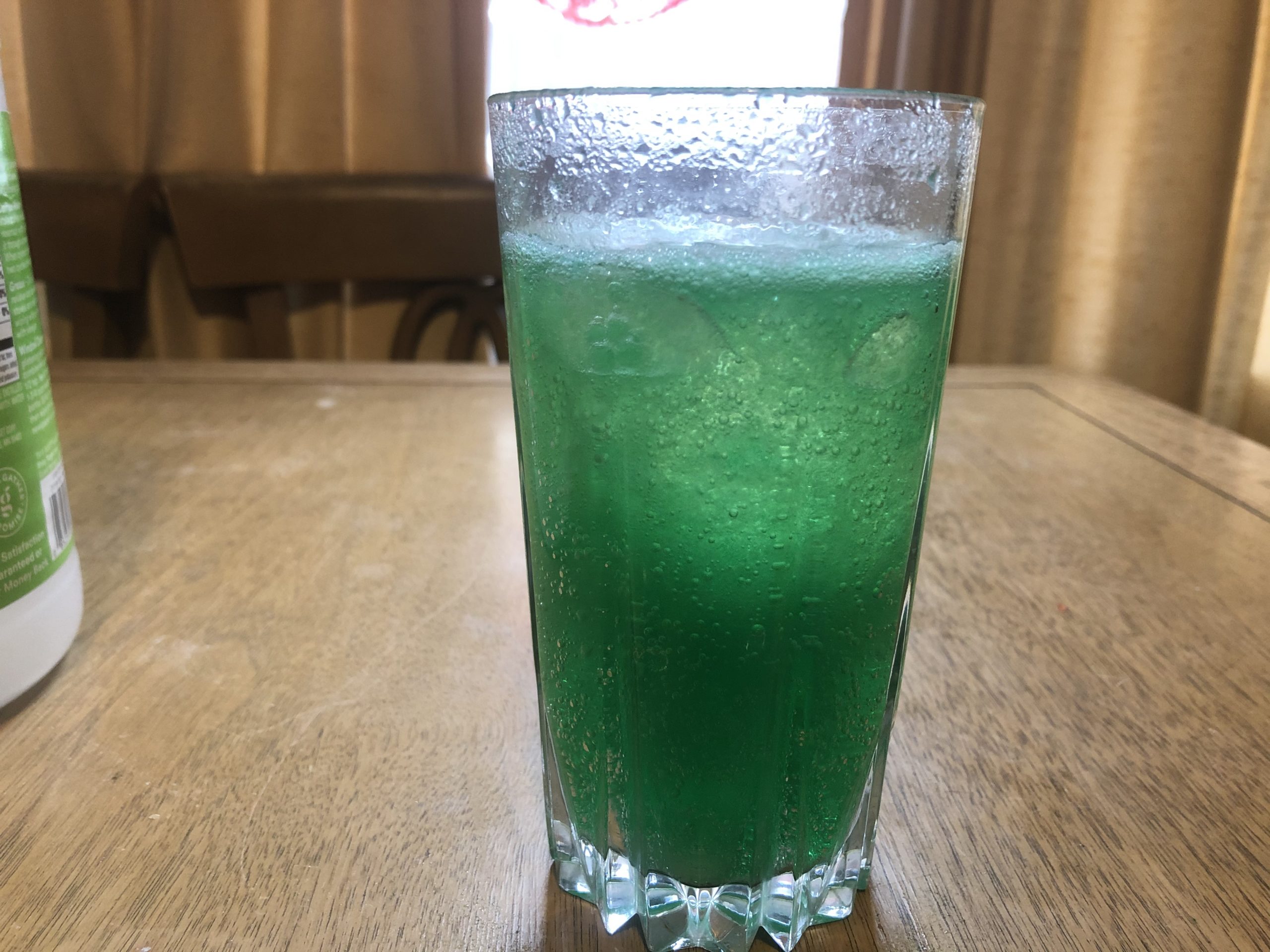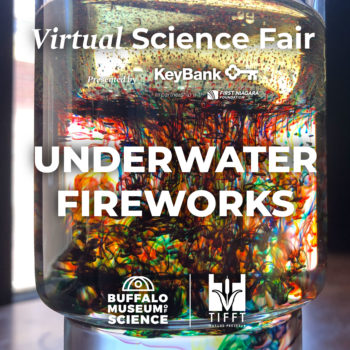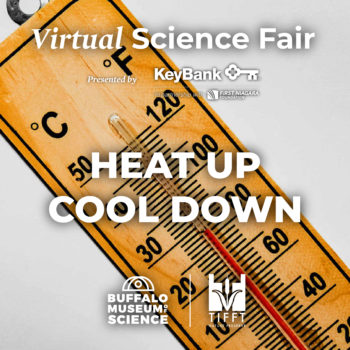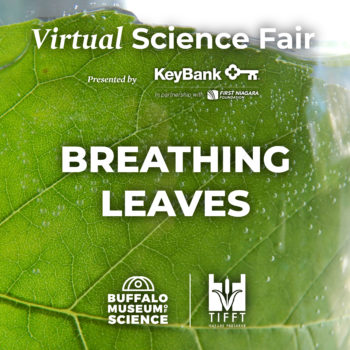Lava Lamp (Sort Of)

Have science fun as a family! Complete activities with parental supervision.
Materials:
- Light-colored vinegar
- Vegetable oil
- Baking Soda
- Food coloring
- A tall, clear glass or jar
- A spoon
- A cup with a spout (not pictured)
- Paper towel
- Optional: a dish or bowl to catch any possible spill over
Procedure
- Fill the glass about halfway with the vegetable oil.
- In the cup with the spout, pour in about a cup of vinegar.
- Add desired color of food coloring and mix.
- Wipe off your spoon—you don’t want the vinegar mixing with the baking soda…. yet.
- Pour the dyed vinegar into the glass, leaving about an inch at the top of the glass. What do you notice? Where does the vinegar go?
- Now, take a half spoonful of baking soda. Pour it into the glass.
- Watch what happens! As the baking soda and vinegar chemically react, it creates carbon dioxide gas. That gas is lighter or less dense than the liquid around it, so it rises up through the oil, bringing little bits of colored vinegar with it! SO SATISFYING!
- When the reaction stops, that means that all of the baking soda reacted with the vinegar. Add in another scoop of baking soda to see if you can get it started again!
- Be sure to take a picture or video to share in the Facebook comments on the Buffalo Museum of Science or Tifft Nature Preserve pages!
What’s it all about?
This super satisfying experiment is simple but chock full of science.
You’ll notice that the vinegar and oil do not mix. This is because of the molecules that make up these liquids. Vinegar, which is made mostly of water, is a polar molecule—it’s electrical charge is not balanced. Oil is a nonpolar molecule, so the charge is evenly distributed. Polar molecules and nonpolar molecules never mix, which is why you get this neat effect!
The reaction between baking soda and vinegar is a classic experiment. Baking soda is a base and vinegar is an acid, so when they are combined, you get an acid-base reaction. In chemical reactions, the chemicals change when they react. So, when you combine baking soda (sodium bicarbonate) with vinegar (acetic acid), they react, creating carbon dioxide, water, and sodium acetate! Totally different things!
Try It!
- How many spoonfuls of baking soda can you put in before the vinegar stops reacting? Try it out!
- Does the amount of baking soda affect how the “lava lamp” looks? We don’t recommend using more than a spoonful at a time, but what happens if you use just a little bit? Only a pinch?
